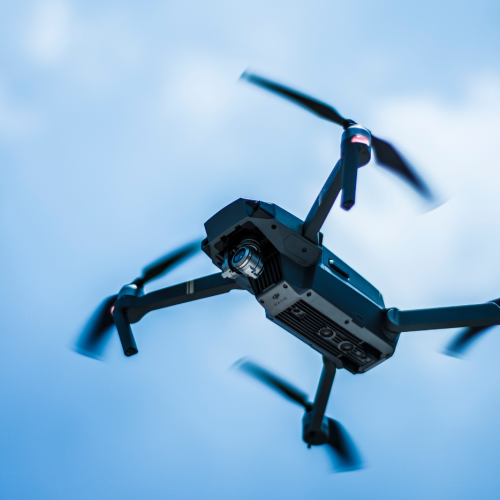
The COLLARIS Network (a collaborative network on unmanned aerial systems) carried out a foresight study on upcoming near-term innovations that will re-shape the use of drones in the blue light sector („2030 horizon for drones in civil protection and crisis management activities”). Its main finding was: While there is a high number of drone solutions that has already achieved technical maturity, today only a relatively small fraction of available capabilities is used operationally for rescue and crisis management.
The Process: Consultations with Various Experts and Organizations
Literature overview and desk research were complemented by several individual interviews with experts. The resulting preliminary findings were consulted with a broader community during two online workshops: one for innovation providers and European R&D projects related to the development of drone technologies, the other for practitioners of the emergency management sector. During these workshops, technologies, different use-cases and enablers were discussed and participants shared their valuable knowledge, experience and remarks. The updated document was shared with the members of COLLARIS Strategic Group and associated partners (currently comprising 23 institutions) for their written feedback and discussed during a dedicated summary meeting. These broad and extensive consultations with the representatives of interested communities – both solutions providers and end users – ensured that the presented key findings and recommendations reflect their common opinions and needs.
Conclusions: Gap Between Technical Capabilities and Operational Practices
The rapid development of drone technology represents a fantastic opportunity for first responders and crisis management professionals for better reconnaissance, increased situational awareness, improved coordination of activities as well as growing number of direct, physical actions. Drones indisputably offer a very substantial potential for increasing efficiency of civil protection activities.
However, even as technology is developing fast, there is and will be a continuously existing gap between the recently created technical capabilities and the operational practices of civil protection not utilising them yet. Understanding new capabilities, assessing and experiencing their usefulness, identifying the way to optimally utilise them, arranging operational procedures and practices of regular use – these are only some of the challenges faced by civil protection users around the world. At the same time, this effort need not to be conducted separately by different institutions – there is a clear added value of sharing experiences and learning from others. This was the underlying assumption for establishing the COLLARIS Network.
During the course of the Network activities various representatives of the civil protection and crisis management community helped to elaborate and clearly endorsed the following general observation: While there is a high number of drone solutions that has already achieved technical maturity, today only a relatively small fraction of available capabilities is used operationally for rescue and crisis management. Effective use of drones is limited mainly by legal and organisational obstacles and not by pace of technology development. As a significant number of innovative solutions will become available within the coming 5 years, this gap will grow unless those impediments are properly addressed.
More details about the key findings and recommendations form the COLLARIS foresight study can be found here (i.e., the 'Outputs & Results' section on the COLLARIS project website). If you do not wish to read the entire study, there is a concise four-page summary ('leaflet').
About COLLARIS Network
COLLARIS (COLLaborative network on unmanned AeRIal Systems) is a capacity-building initiative to develop a sustainable European network of scientific, engineering, and end-user expertise related to unmanned aerial systems (UAS) in civil protection and disaster response. COLLARIS offers a networking platform as part of the Union Civil Protection Knowledge Network for information exchange and experimentation with advanced concepts of UAS for disaster response and crisis management. These activities are accompanied by thematic workshops, webinars, and moderated discussions, as well as trials and embedded first responder trainings, aimed at increasing the efficiency of UAS operations by bringing knowledge closer to operational use.